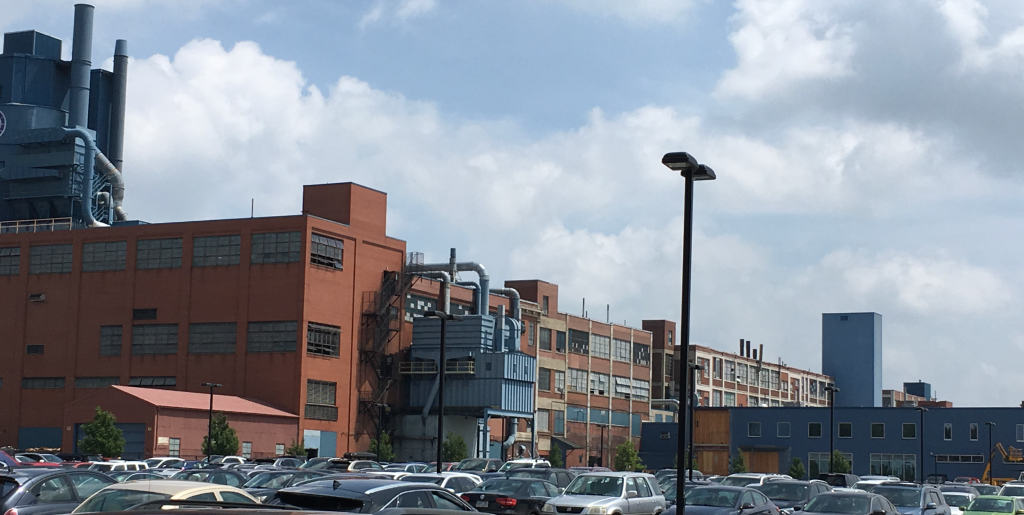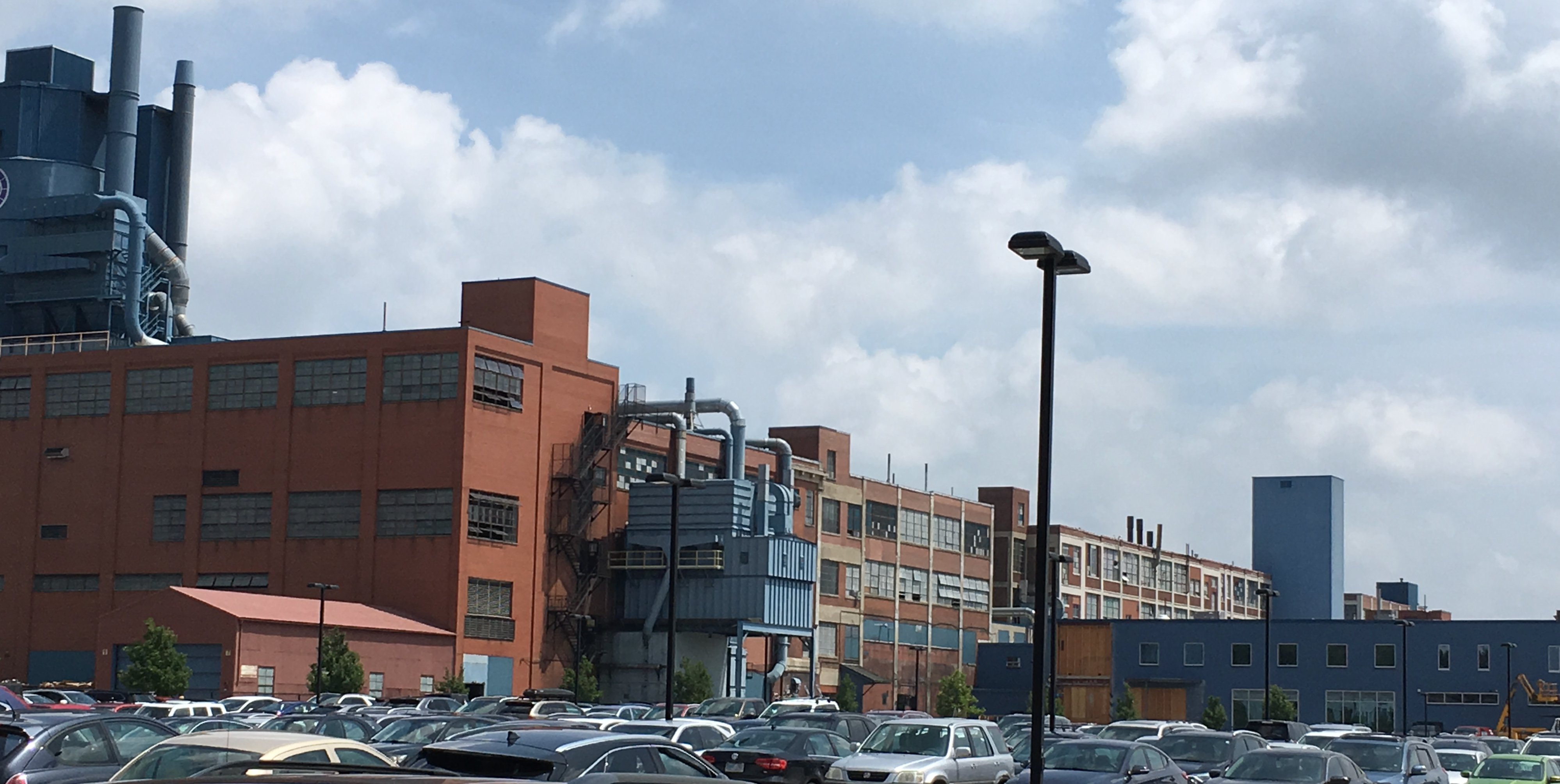This article is part of the series The Trials and Jubilations of Working in the Rubber Industry: Rubber Worker Storiesand is supported by the Region of Waterloo Arts Fund.
In Between Worlds, Juliana’s grandfather and uncle worked in a rubber factory that made tires from raw rubber. Like many aspects of the series, there is truth in the fiction: In the 19th and 20th centuries, Waterloo Region in Ontario, Canada, had a strong manufacturing industry, and rubber was mixed in several factories. (Uncle Peter actually worked in two rubber factories. This reflects what happened in real life when one factory closed in Kitchener in 1993.) In this first of a series of three articles, you’ll learn how rubber was mixed during Opa’s time.
What Is Rubber?
We use rubber in many products, such as rain boots, bouncy balls, and of course car tires.
Natural rubber comes from rubber trees: it is latex, a tree sap. Synthetic rubber is made from petroleum.
Pure rubber, either natural or synthetic, becomes brittle when it cools. When it warms up, it becomes gooey. Not a practical substance on its own for tires! You have to add other ingredients to make rubber useful for tires.
What Do These Ingredients Do?
Additions make rubber strong enough to hold up a car but soft enough to grip the road. Producers change the extra ingredients depending on the kind of tires a car needs.
For example, if you drive a car where the winter temperature dips to -20˚C, then you need winter tires. The additions in these tires keep them soft in cold temperatures so they can grip the snow and ice. But if you keep winter tires on your car in the summer, they become too soft and wear easily.
Drivers in warmer climates need tires with rubber mixed to run well in those temperatures. These tires feel soft in warmer weather, but once temperatures drop below -7˚C, the rubber becomes too hard to grip the road. This becomes very dangerous when you have to brake and turn.
The Basic Steps in Mixing Rubber at Uniroyal

Don D.* worked at the Uniroyal tire factory in Kitchener for almost 40 years before he retired in 1993. He said mixing rubber was like following recipes in a cookbook that listed different mixtures of chemicals and pigments for different tires.
Think of when you go to the grocery store and buy bread, which is pretty much the same no matter what. Knead together water, flour, yeast, and a little salt into a dough. Let your dough rise, punch it down, place it in a loaf pan, let it rise again, bake it, and you have a loaf of bread.
Yet the grocery store has shelves and shelves of different kinds of bread. Why? Often, it’s because the ingredients are a little different. Some breads have more whole wheat flour while some have more white flour. Others have rye flour.
Mixing rubber for tires is no different: the basic process is the same, but the recipe for each kind of tire differs.
The following lists the steps taken to mix rubber for tires at Uniroyal in Kitchener. Much of the work was done manually.
- Rubber was cut out of its moulds and sent to the scale.
- A compounder weighed all the chemicals and pigments and sent these to the scale, too.
- The scale man weighed the rubber and added the other ingredients.
- Another operator mixed the rubber, chemicals, and pigments in a single batch in a Banbury mixer. (Picture a bread machine you might have at home, but instead of kneading 1 kg of dough, the Banbury kneaded 250 kg of rubber compound).
- The batch was then allowed to drop to the floor below into a mill, where it was cut (“sheeted”) into sheets of rubber compound that were usually 20 inches x 20 inches (about 50 cm x 50 cm).
- The sheets were weighed again, then ground down and re-mixed.
- The material was milled a second time into sheets and then sent away to be built into tires.
Each step required very hard labour. Brian, who also worked at Uniroyal, held the scale job for one and a half years, lifting 450 pounds every five minutes.
“I could bend a dime with my fingers after a while,” he says.
One Very Dangerous Chemical: Carbon Black
In Between Worlds 7: What Will Come and Between Worlds 8: A Father’s Journey, Juliana expresses concern that Opa will develop cancer from his work at the rubber factory because of a substance called carbon black. I learned about carbon black and its role in causing cancer through my local paper a few years ago. Sadly, it’s left many families without fathers and grandfathers. (Mostly men worked in these factories.)
So, what is carbon black? Why was it used in making tire rubber compound? And is it still used?
Carbon black is derived from soot, makes rubber stronger, and protects it from UV damage from the sun. The material is therefore still being used in tire manufacturing.
The rubber factories of the 19th and 20th centuries in Waterloo Region were filthy, and the Uniroyal factory’s black dust covered the surrounding neighbourhoods. Eric, who worked in the office at Uniroyal, remembers hearing that no one hung out laundry to dry on Mondays, because that’s when the factory cleaned its tanks.
“You’d get black film over everything,” he says.
Jim, who worked at the Goodrich plant on Goodrich Drive in Kitchener, recalls a similar story: “So, my parents lived in the backyard of [the Uniroyal] plant and carbon black was in our underwear and our clothing from the time we were small. My mother would hang out her laundry and the odd time there would be a vent of carbon black into the air. Next thing you know, she would be upset because she had to wash the laundry again.”
Thankfully, working with rubber is a much cleaner process today.
How Rubber Is Mixed Today in Waterloo Region
AirBoss of America Corp. now occupies the former Uniroyal building on Strange Street in Kitchener. The company works with rubber, but doesn’t build tires.
The rubber manufacturing process has improved in many ways over the years. AirBoss says the following in its 2020 annual report:
AirBoss operates five mixers at its Kitchener location, including a white/colour mixing line. The mixers and material handling within the plant are highly automated. The Company uses the latest modern technology for the automated handling of many different grades of carbon black, automatic weighing systems for powders as well as custom designed robotic equipment for piling and packaging of finished compound in strip form.
The earlier method for mixing rubber required many people. (Brian estimates 500 to 700 people per shift, but that includes those who built tires.) Today’s automated process brings people into far less contact with hazardous substances.
This promotional video from AirBoss illustrates how it mixes rubber at the Kitchener plant today:
In the next article in the series, you’ll learn how tires were manufactured in Waterloo Region.
*Two participants in the oral history project were named Don and had last names that began with the same letter. So, I’ve used letters from the ends of their last names instead: Don D. and Don S.

We manage all data submitted as outlined in our privacy policy.